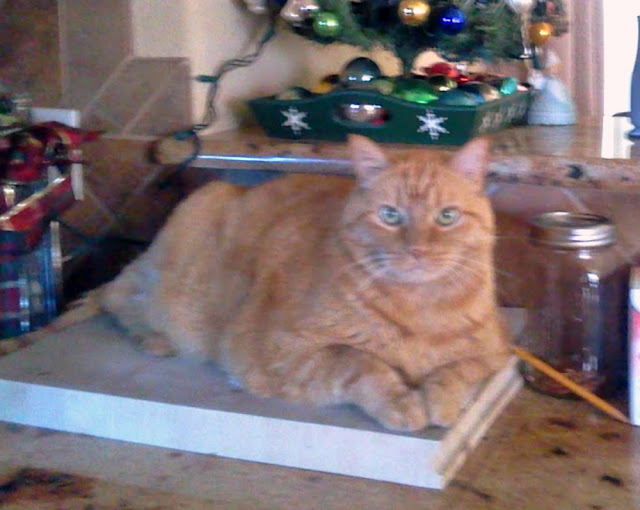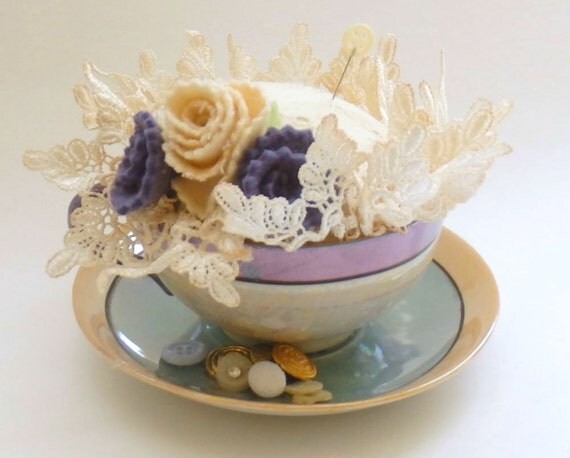Another view.
And yet another.
It took a lot of looking before I even found what the box was called. The most used name appears to be square twisted box.
I was unable to find instructions for the finishing details so, using Kathy's box as a model, I developed something similar.
These are my three most recent. Mine still aren't as good as hers (everything she made looked professionally done), but perhaps eventually, with a little practice they might one day be close enough.
For the instructions:
These are mostly the tools I used. You'll need a sheet of patterned paper (I used double-sided scrapbook paper but single-sided eases over corners better), cardboard (I used the back of a desktop calendar. You want something with a bit of substance, i.e. the back of a tablet), a glue stick, bulldog paper clips, needles and thread (I used both a tapestry and a beading needle). I show linen beading thread here, but I actually only used it on one of the boxes; for the other two, I used regular black sewing thread. Also, I've shown a corner rounder but this one doesn't cut through cardboard so I rounded mine with scissors.
First, make a box following this tutorial. I start with a 5 1/4" x 7 1/2" rectangle of double-sided scrap book paper. (Note: whatever pattern is facing up when you begin to fold your paper will be the predominant pattern of the box.)
Source: paperkawaii.com
For the finishing details: Cut three squares of cardboard: one to the exact measurement of the bottom square, another a tidge smaller than the box opening (it should fit inside), and one that's approximately 1/2" larger on both sides than your opening. Mine usually work out to be 3" for the lid, 2 1/2" for the bottom and a bit smaller to fit in the opening.
Round the corners on all three squares.
Glue the cardboard, centered, to the paper square.
Start by gluing the corners on each end of one side. I swipe the glue over the corner, then pull the glued section onto the cardboard, then finesse the edges in little pleats until I create a roundness, gluing as I go. Believe me, even though this appears difficult, in the long run it's better than squared corners. With squared corners, the cardboard tends to poke through the paper.
Do one side/two corners at a time.
Complete all four sides.
Secure with paper clips until dry.
Glue paper in this manner onto all three cardboard squares. Then glue a finished square onto the bottom of your opened paper box. At this point, you can clamp it on two sides or weight it with a something heavy, i.e. a book.
Determine the center of the lid cardboard by measuring corner to corner and drawing an X.
Make holes all the way through both the cardboard and the paper, using a tapestry needle.
Attach your choice of buttons and beads.
Once you've sewn on your button/bead knob, glue the square that was sized to fit inside the box opening to the one made as a lid, clamping until glue dries.
Voila! You've finished your box.

These make great presentation boxes for jewelry. I put little pillows inside mine (sized 2 1/2" sq. with an envelope back and stuffed with polyfil). They would be wonderful as wedding favors made with wedding gift wrap or kraft paper.









































